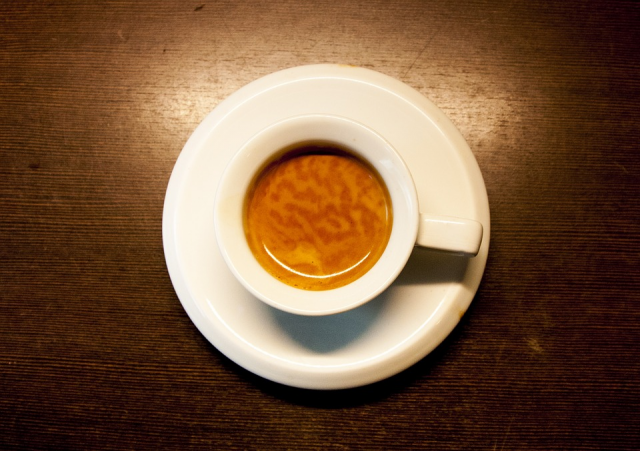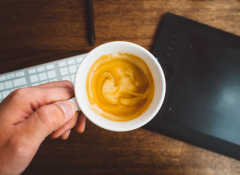Boutique Coffee extraction method what is the difference between boutique coffee extraction and espresso?

Professional coffee knowledge exchange more coffee bean information please follow the coffee workshop (Wechat official account cafe_style)
Espresso Coffee extraction detailed steps Italian concentration common sense
Let's first talk about making hand-brewed coffee with water below 85 degrees C (for example, using V60). If you have read my essay on the drinking temperature of coffee, you should know why experts do not approve of brewing coffee with water below 92 degrees Celsius. The answer is that coffee extracted from water below 92 degrees will tend to be flat and bring out an unpleasant sour taste. So why do so many coffee makers still use low-temperature water to make coffee? In that essay, I have actually given an explanation, but there is another possible reason that was mentioned at the time but not explained in detail, that is, the operator confused "hand-made coffee" with the conditioning of Espresso. Whether in the United States or Europe, it is almost a foregone conclusion that the coffee made by hand should be made at 92murmur96 degrees Celsius. However, Espresso is made by pressing and filtering at a pressure as high as 7Murray 11 atmospheres (25muramel 35 seconds). After research, the most suitable water temperature is 85Mui 95C (see (note)). In other words, 85 degrees C is the low temperature limit for conditioning Espresso, not the suitable temperature for hand-brewed coffee. (incidentally, is this the name of Taiwan's "85C" coffee chain? It has always been something that makes me curious. Under the condition of the same time, the low water temperature will inevitably reduce the extraction rate, increasing the ratio of powder to water can certainly increase the concentration, but the unpleasant sour taste can not be avoided. But then again, if you think the "unpleasant sour taste" of being criticized happens to be what you like, then ignore other people's criticism and do it the way you like it. After all, you are the one who drinks coffee. There is no need to sacrifice your enjoyment in order to please other people's opinions.
Then we talk about "incense" and "taste". In your letter, I totally agree that coffee should not only focus on "taste" but ignore "fragrance". In fact, Qi and taste are closely related, and people who don't believe it can understand the feeling of squeezing their nose and drinking coffee. It is precisely for this reason that hot coffee has always been more popular than cold coffee, because when the temperature is higher, the aroma of coffee overflows more, and in addition to the aroma inhaled through the nostrils and directly felt, there is also the aroma of liquid coffee overflowing on the tongue, rising through the nasopharyngeal tube at the back of the throat and entering the nasal cavity, resulting in an afterrhyme (aftertaste). According to the study, the aftertaste of coffee is difficult to overflow when the coffee is below 60 degrees Celsius.
Let's talk about the "iron law" laid down in SCAA's gold cup theory, that is, what you call a "certain scheme" about extraction rate, EXT, Ratio, TDS and so on. Perhaps based on my professional training, I remain skeptical about any "law" that has not been proved, although after verification, I find that most of the "laws" are indeed true. Now, with regard to coffee conditioning, my advice to you is to adopt the same attitude, that is:
No matter what anyone (including me) or any professional body (such as SCAA) tells you, maintain appropriate skepticism without your own personal experience or verification.
Your love of coffee can be seen from the letter, which seems to be my own figure many years ago. So I believe that you will experience it yourself (as I have done over the years), and you will eventually find your own "iron law". For example, if you have read the essay "making a good Cup of Coffee (5)", you will find that although I agree with SCAA's findings on the "ideal extraction rate" project, I totally disagree with their conclusions on the "ideal concentration" project; in my opinion, this part should be determined by personal preference. Take the members of our May 4th Coffee Club, for example, when we use V60 or siphon pot to make coffee, their preference concentration is slightly different, and the ratio of powder to water decreases from 1:9 to 1:12. Among them, 1:9 and 1:10 enthusiasts are the majority. As for the concentration below 1:12, everyone thinks that the concentration is too thin. Like the example in your letter, 15 grams of beans with 260ml (about 260g) of brewing water, take 230ml extract coffee liquid, if brought to our club, probably no one is interested in drinking. But this is definitely not to criticize such a concentration is wrong, but only to express one thing, that is, the May 4th Coffee Club does not like this concentration!
With regard to your last question, reorganize it, and the content should be:
The amount of extraction is enough, but there is often a lot of water left in the filter cup, so it is abandoned, and it is emphasized that it is intentional.
That should be right, right? So let me give a brief answer for the time being as follows:
"there is a lot of water in the filter cup" is basically technically poor. In an ideal hand flush, if the amount of water is handled well, only a small amount of water is allowed in the filter cup at most; too much water left means "lower concentration".
In case you inadvertently inject too much water and have to give up the coffee liquid left in the filter cup, there is really no need to have the idea of "pity".
Your doubts will be answered in detail when your essays write about the actual operation of the hand filter cup, just because my daily life is very full (such as this month's trip to Inner Mongolia), a little lazy, the speed of writing will slow down, and the planned chapter will have to be postponed. At present, you can only think about the following two "eight-character mantras":
The acid is bitter first, and the good taste comes out early.
These eight short words actually contain the basic principles and skills of making coffee. They are the words I coined to guide members who first entered the door of coffee after the establishment of the May 4th Coffee Club, and I will often quote them in future essays. For example, the second of my two answers above has been clearly expressed in "good taste early".
.
Important Notice :
前街咖啡 FrontStreet Coffee has moved to new addredd:
FrontStreet Coffee Address: 315,Donghua East Road,GuangZhou
Tel:020 38364473
- Prev

Italian espresso extraction time powder liquid proportion standard reference production Espresso coffee process step production principle
Professional coffee knowledge exchange more coffee bean information please follow the coffee workshop (Wechat official account cafe_style) Espresso Coffee extraction detailed steps of the common sense of Italian concentration have read the ICE article on the relationship between flow rate, packing power and grinding scale. Press the cooking button to the first drip
- Next

How long does the espresso machine take to extract? How to avoid excessive extraction?
Professional coffee knowledge exchange more coffee bean information please pay attention to the coffee workshop (Wechat official account cafe_style) Espresso coffee extraction detailed steps Italian concentrated coffee extraction methods generally there are several ways to use filter paper in dripping coffee using hanging ear coffee bag in dripping coffee using flannel cloth to filter in dripping coffee
Related
- What is the meaning of lactic acid fermentation with coffee bean treatment?
- How to judge the state of foam by sound?
- How does the latte pull out the unicorn pattern? Come to get for a little trick to improve the flower pull!
- Will flower pulling affect the taste of the latte?
- Do you know the history of coffee?
- The difference between honey treatment and sun washing what is raisin honey treatment?
- What kind of milk can a novice use to make coffee foam to keep the foam longer? The correct method and skills of milking tutorial sharing
- Why do washed coffee beans taste sour? Flavor characteristics of washed Coffee
- Introduction to the skill of how to practice the size and height of water injection around the circle of hand-brewed coffee
- How do beginners practice coffee flower drawing from scratch?

